In this article
Cats are obligate carnivores by nature, so as long as their diets are well-balanced, like they would be in the wild, they don’t require any fruits or vegetables to stay happy and healthy. Still, there are fruits and veggies that most kitties can safely eat now and then in strict moderation as long as they don’t suffer from any underlying health issues. However, that doesn’t mean they need them in their diet or gain any significant benefits from them.
If your cat is suffering from diabetes, gastrointestinal issues, or pancreatitis, consult with your vet before offering them anything besides their regular diet. So keep reading below to find out what fruits and vegetables healthy cats can eat as occasional treats.

Fruits That Healthy Cats Can Eat in Moderation
Here are some safe fruits healthy cats can eat occasionally, as long as they are given a green light from their vet!
1. Bananas
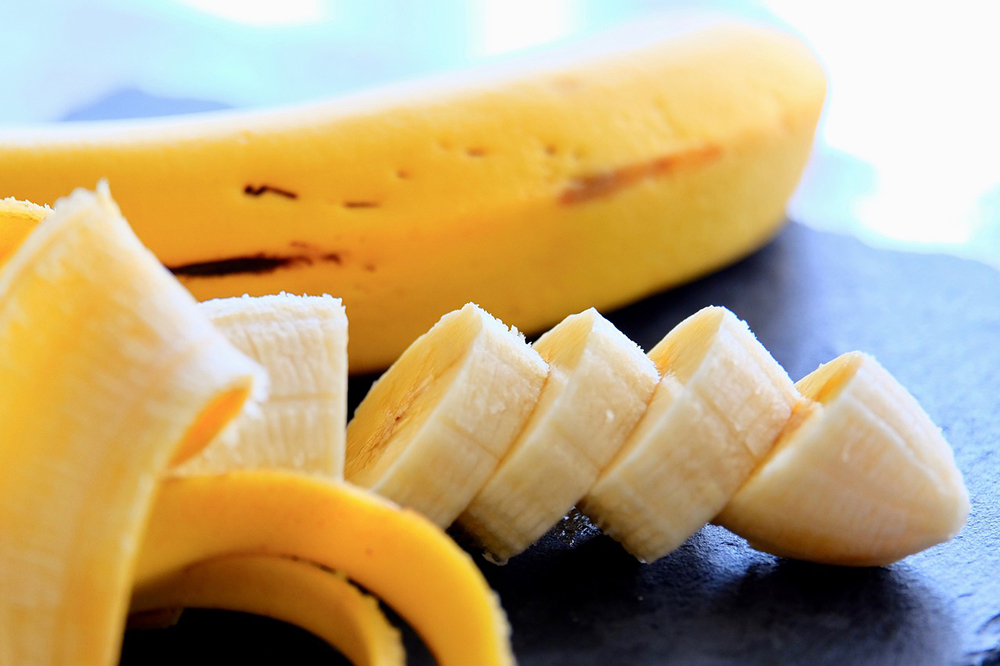
Felines require potassium for good health; otherwise, they can develop health problems like lethargy, weight loss, muscle pain, and even muscle weakness. A cat’s diet should already provide all the potassium that they need for good health, and it’s unlikely that a small piece of banana now and then will impact potassium levels significantly. Bananas are also very high in sugar and should only be offered to healthy cats on rare occasions. Anything more than that risks causing unwanted side effects such as digestive upset and obesity over time, which predisposes one to various health issues.
Simply cut a small bite-sized piece of banana, and offer it to your cat as a snack. Another option is to mash it up and offer it as a “pudding.”
2. Blueberries
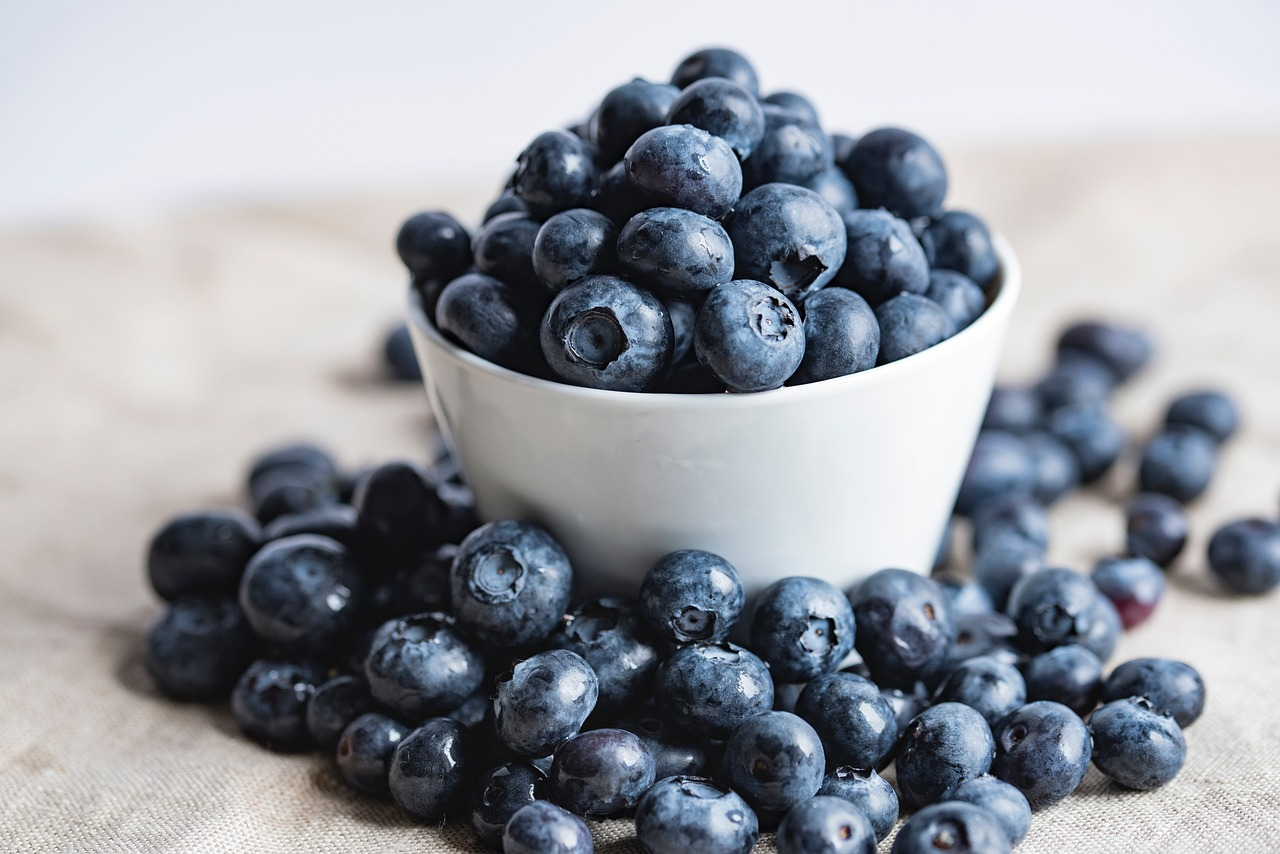
While blueberries are not a “superfood” for cats like they are thought to be for humans, cats can eat this fruit as treats in moderation to boost their antioxidants, which can help keep them healthy as time goes on. They may help neutralize any free radicals roaming around in a cat’s body.
Give your cat a blueberry every now and then if they show interest in the fruit. Alternatively, you can throw one or two in their food bowl at mealtime for variety.
3. Raspberries
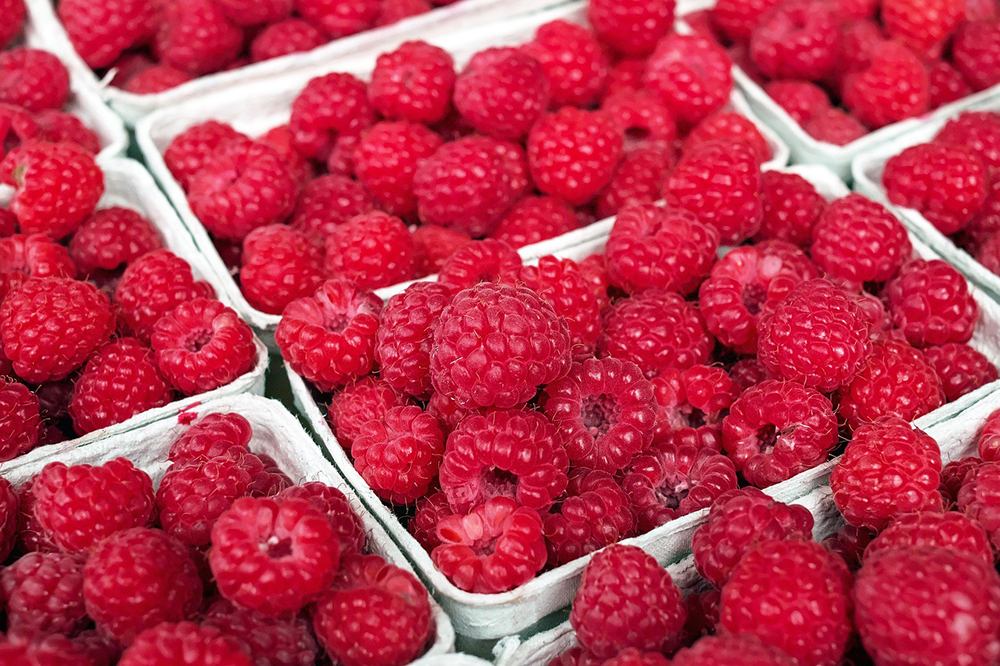
Some cats like raspberries, and others don’t. The good news is that it doesn’t really matter either way. Raspberries aren’t necessary for good cat health, but they may provide a source of fiber and antioxidants that felines can benefit from, even if minimally. These fruits also happen to have vitamins K and A, which play a positive role in things like blood clotting, skin development, and muscle health.
You can give one or two raspberries to your cat as a snack, or add a few to their meals throughout the week.
4. Strawberries
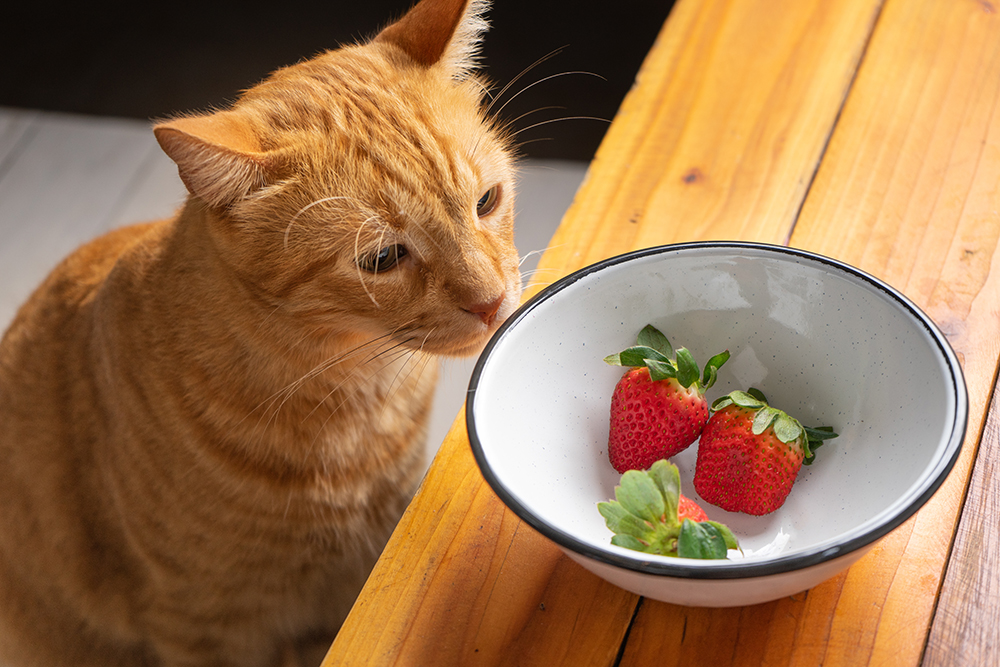
Strawberries are also safe for most healthy cats to eat. This fruit is high in water content, so offering a strawberry on a hot sunny day can help relieve your cat and help with maintaining hydration. However, strawberries should never replace access to fresh, clean water.
Whole strawberries can be tough for feline friends to eat, so it’s a good idea to chop them into little pieces before offering them as occasional snacks.
5. Watermelon
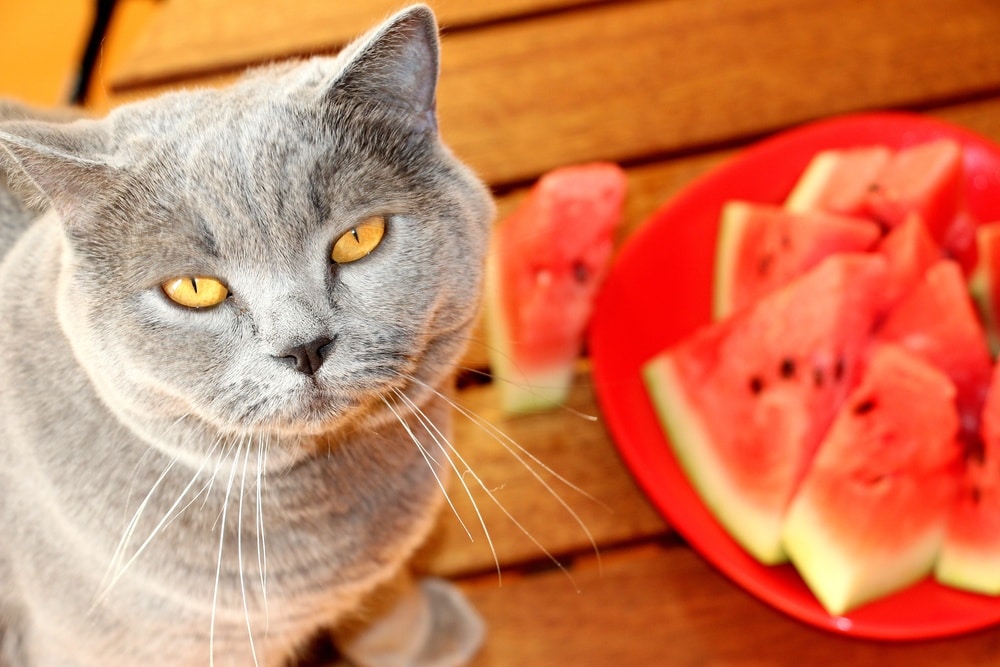
Watermelon is a delicious summertime treat, and some kitty cats seem to think so, too. Fortunately, there is nothing problematic about offering a small portion of this juicy fruit to your feline family member if they show any interest in it. The fruit is hydrating, contains potassium, and has plenty of vitamin C in it. Don’t overdo it, as too much can lead to a stomach upset.
Just pull or cut a small piece of watermelon off your bigger piece, and see if your kitty eats it. It’s important to make sure no seeds are present in any watermelon that you’re sharing.
6. Cantaloupe
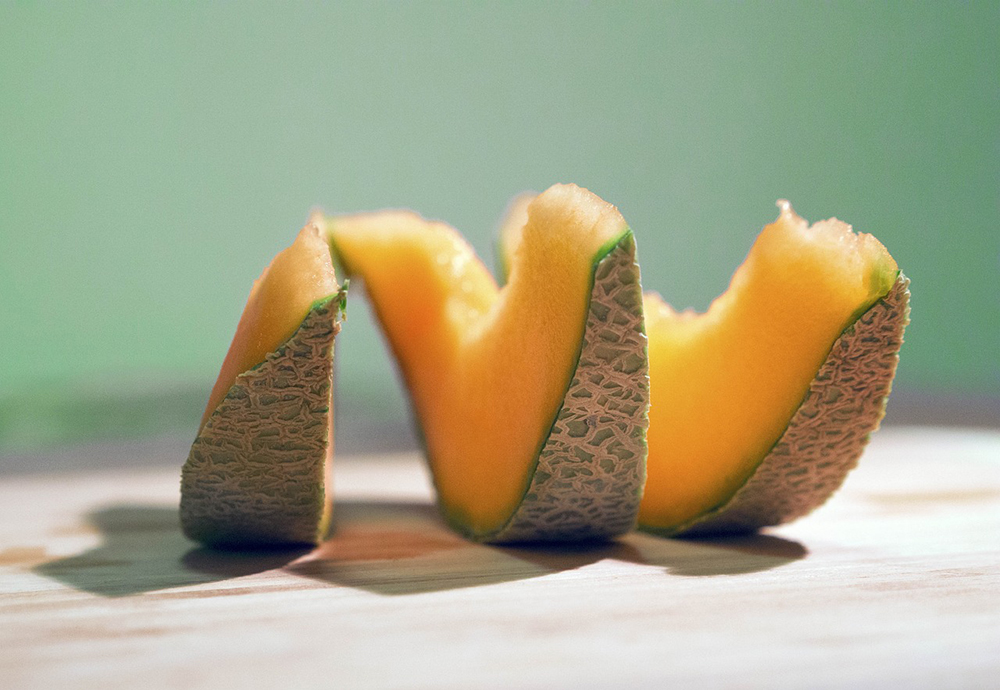
Cantaloupe doesn’t pose a risk to cats unless they try eating the rind, in which case, it could be a choking hazard. There are many vitamins and minerals present in cantaloupe that cats may potentially benefit from, but it’s unclear how many of these nutrients they actually absorb when eating the fruit, given their carnivorous tendencies.
Feed cantaloupe to your cat in very small amounts, no more than once a week. Cut it into small bite-sized pieces, or mash it and offer it as a snack or meal supplement.
7. Pumpkin
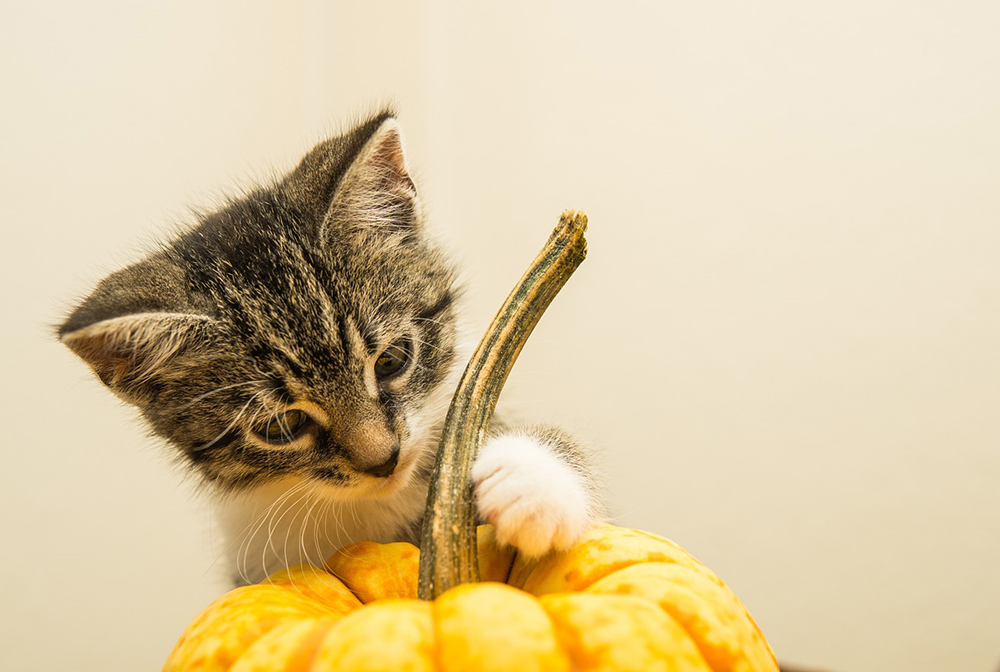
Pumpkin is a nutrient-rich snack that some cats may enjoy snacking on. It’s filled with essential fatty acids, antioxidants, and fiber, which can all help keep your kitty’s digestive tract in good working order.
Felines can eat pumpkin both raw and cooked. If raw, it should be cut into tiny pieces that are similar to the size of a cat’s commercial dry food. If cooked, pumpkin can be smushed into a “mashed potato” consistency and then used to coat dry food or offered as a fun snack.
8. Cucumbers
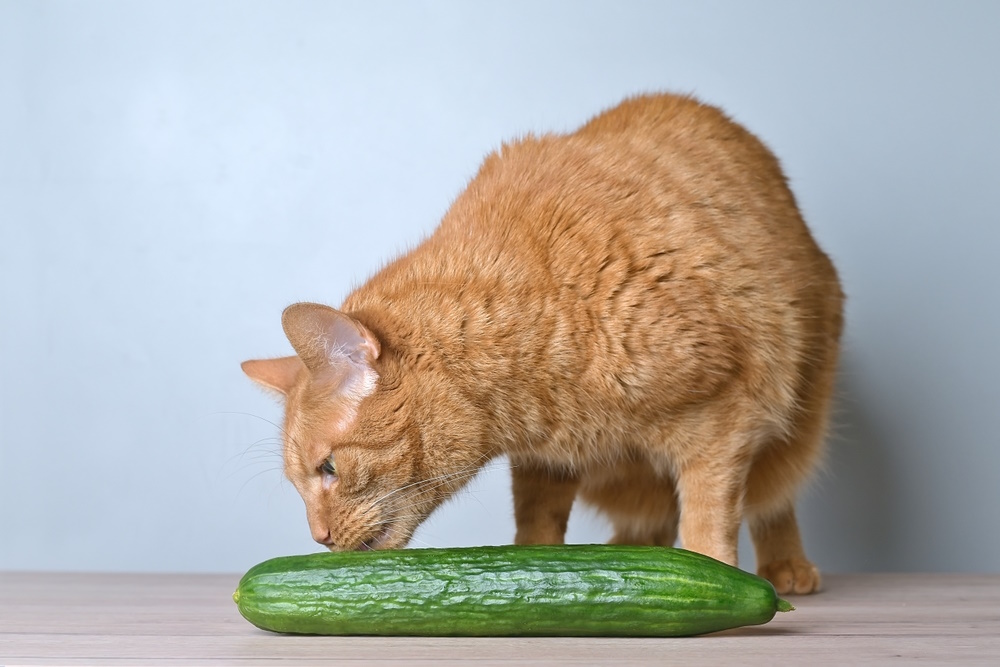
Cucumbers are watery and refreshing for most people, and your kitty might think so too. They are the ultimate summertime snacks for cats due to their water content. Cucumbers also contain nutrients like magnesium and phosphorus.
Slice, dice, or shred cucumbers to your liking for a meal or salad, and save a small amount for your cat during the process. Cucumbers should be offered washed and raw whenever possible.
9. Zucchini
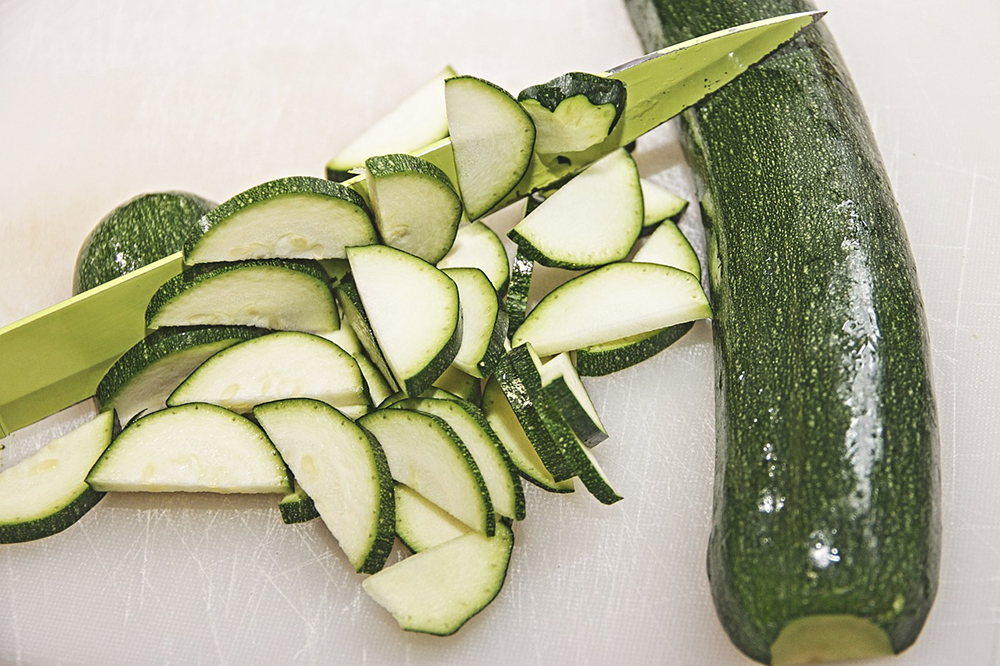
Zucchini is full of water and therefore can help keep your kitty hydrated, especially on active and hot/humid days. While this food is not usually included in a cat’s daily commercial food, it can help boost their fiber and nutrient intake over time, but should only be offered in moderation.
Shred a zucchini and mix it in with your cat’s food, or offer small chunks of it as a treat for obeying commands.
10. Bell Peppers
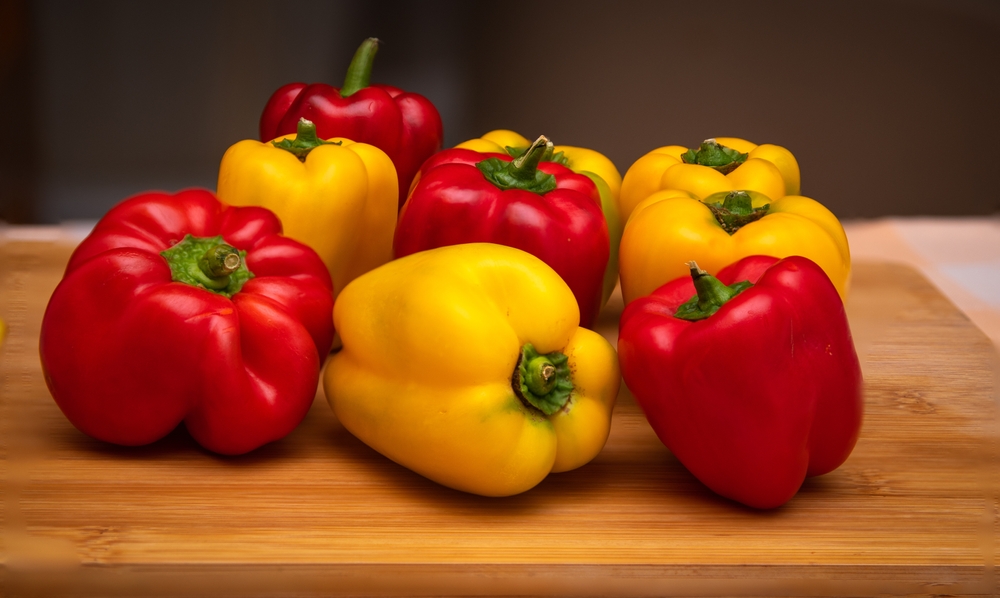
We might love bell peppers, but at best, cats tolerate them. However, they are full of water and antioxidants, but felines are unlikely to reap any significant benefits, as they should be only offered a very small amount once in a while.
Cut a very small piece of bell pepper (any color) into small pieces, and offer a few to your kitty. You can also sauté or otherwise cook a pepper and add a few pieces to your cat’s commercial food occasionally.
Learning about what your cat can and cannot eat is a crucial part of keeping them happy and healthy! Choosing a bowl to serve cat-friendly foods in is another important decision pet owners face. Satisfy the specific needs of your cat with the innovative design of the Hepper NomNom Cat Bowl. Learn why it’s our (and our cats!) favorite food and water dish here. At Catster, we’ve admired Hepper for many years and decided to take a controlling ownership interest so that we could benefit from the outstanding designs of this cool cat company!

Vegetables That Cats Can Eat
Try one of these vegetables that are good for cats in their next meal or for a wee treat, as long as they are not suffering from an underlying health issue.
11. Spinach
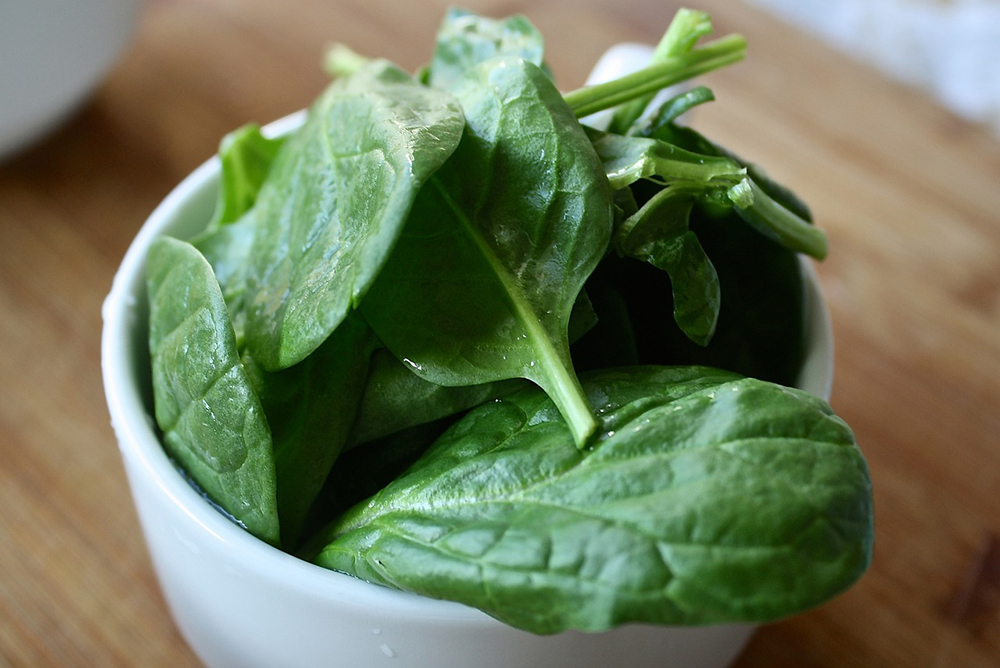
If you’re wondering if cats can eat spinach, the answer is yes, but with caveats. Spinach is vitamin-rich, but it may contribute to the development and recurrence of bladder stones due to the abundance of oxalate in it. Cats suffering from or having a predisposition towards calcium oxalate bladder stones should not be offered spinach. Speak to your vet to be on the safe side.
A tiny bite-sized piece of raw, clean spinach can be offered as a snack as it is, or spinach can be sautéed (without oil, butter, or seasonings) or otherwise cooked, then offered once cooled. It’s important to make sure spinach is never cooked with onions or garlic because these ingredients are toxic to felines.
12. Green Beans
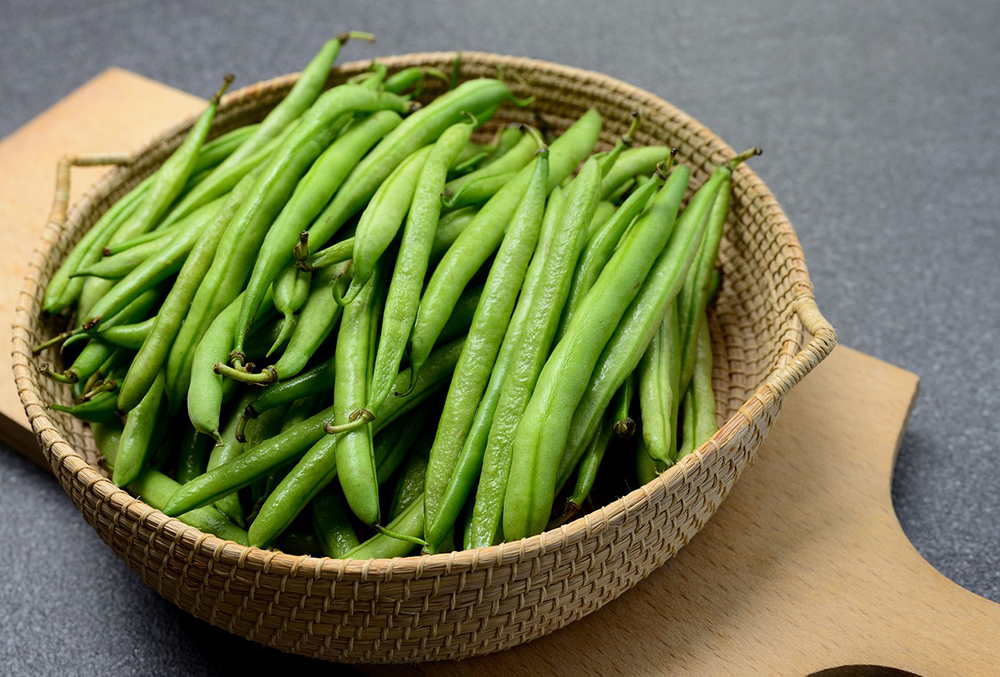
Green beans are interesting and viable snack options for feline family pets when offered in moderation and according to vet advice. Some cats like raw beans, while others enjoy them cooked. Then, there are those that do not like them at all. Try feeding both cooked and raw green beans to your kitty, but in moderation and not more than once per week during snack time, before abandoning the idea.
Steam, bake, or sauté green beans for your kitty, or offer them raw, depending on what they enjoy the most.
13. Broccoli
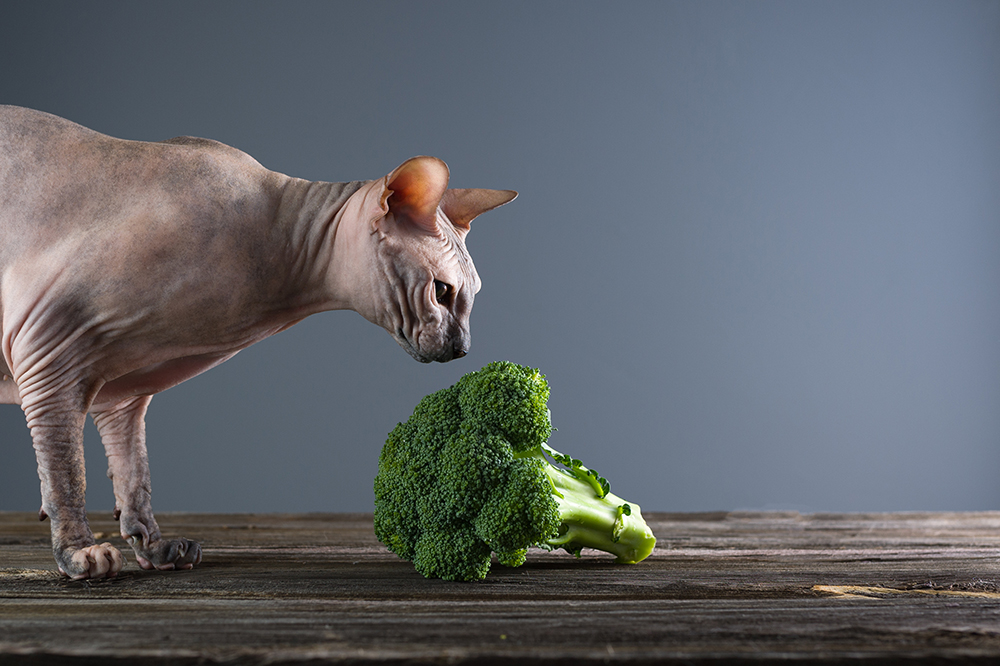
Broccoli is a safe green food for cats to enjoy, just like humans do. No toxic compounds are present, but they should still be offered in strict moderation. Too much veg may predispose to a stomach upset that will be uncomfortable for your kitty.
Steam a small piece of broccoli, and then serve it up, cutting it into small bite-sized pieces before offering it.
14. Peas
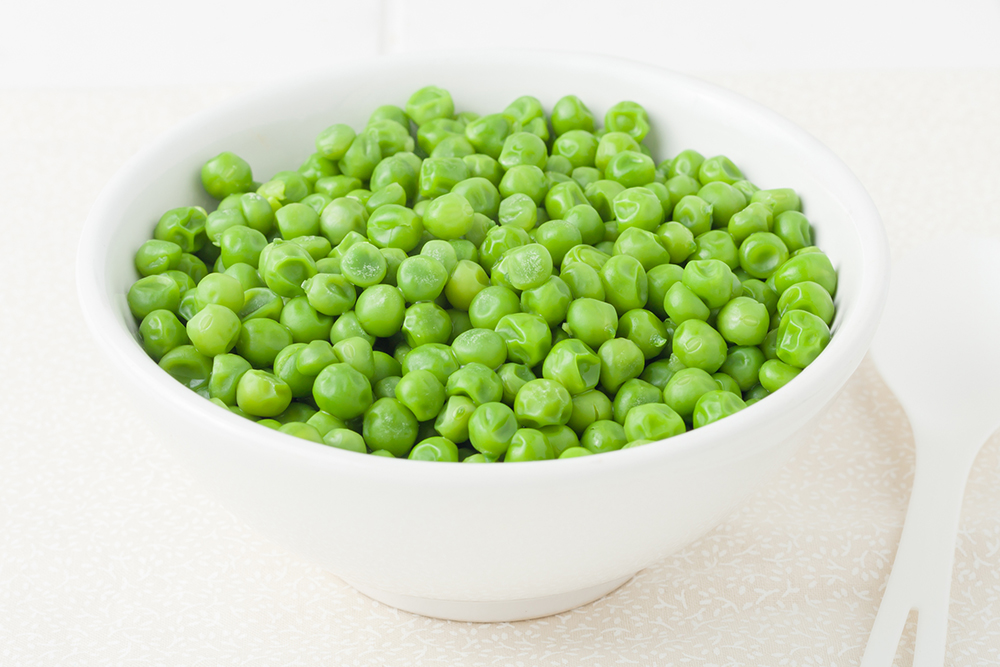
Peas are green foods that most healthy cats can safely eat although their health benefits are quite limited. They’re full of fiber and vitamins A, C, and K for proper muscle, nerve, and eye growth and management. They also contain minerals like iron and potassium. However, the amount a cat can safely eat, which is very little on a weekly basis, is insufficient to provide them with any significant benefits.
You can offer fresh peas to your cat in moderation, but you must rinse them as soon as you bring them home from the grocery store or garden. You can also microwave, steam, or sauté them, depending on your mood and energy levels. Your cat will—or won’t—like them either way.
15. Cauliflower
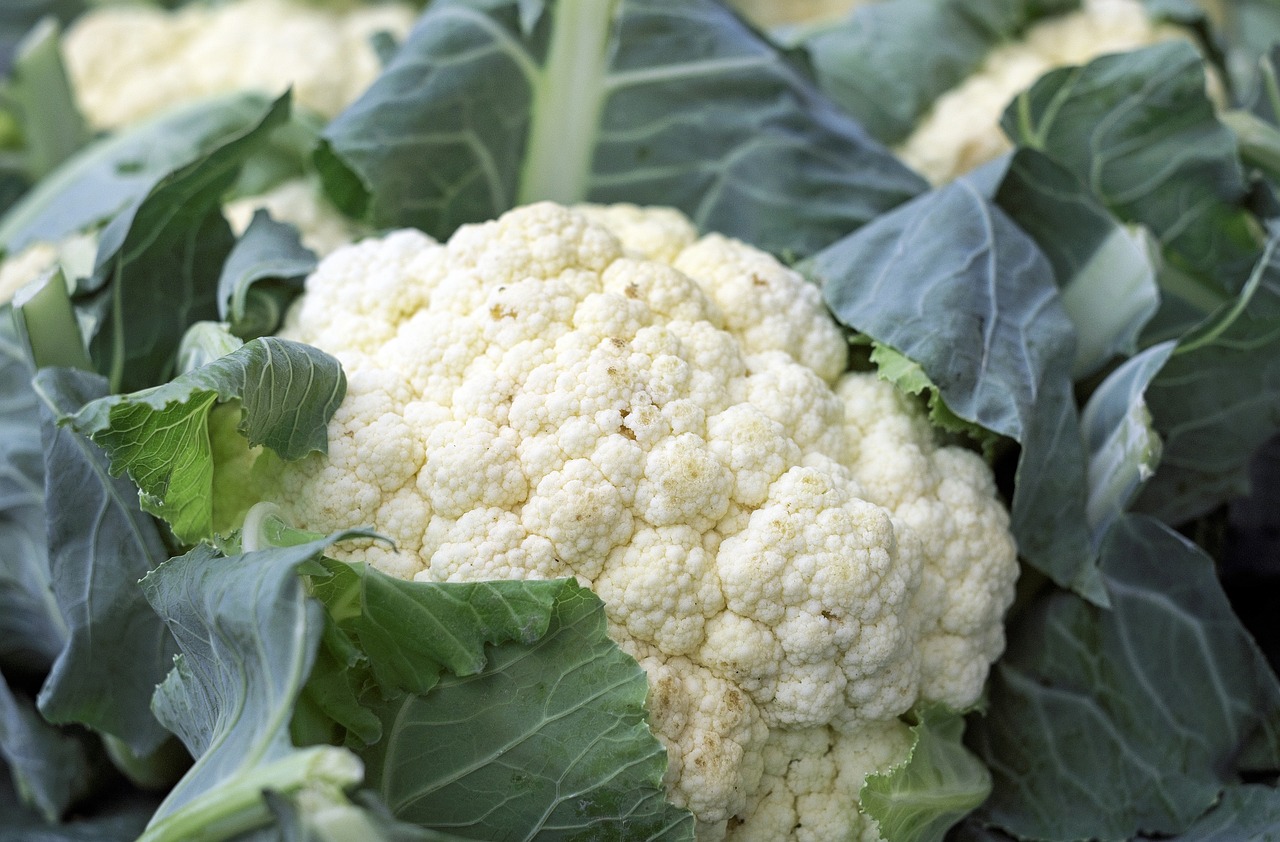
Cats can safely eat cauliflower but in moderation as an occasional treat, as long as they are not suffering from an underlying health issue. However, when eaten raw, the development of a stomach upset and excess gas can occur. It goes without saying that cauliflower should be cooked without butter, oil, or spices and offered in strict moderation now and then.
Microwave, steam, or sauté this veg to make it easier on your kitty’s stomach.
16. Carrot
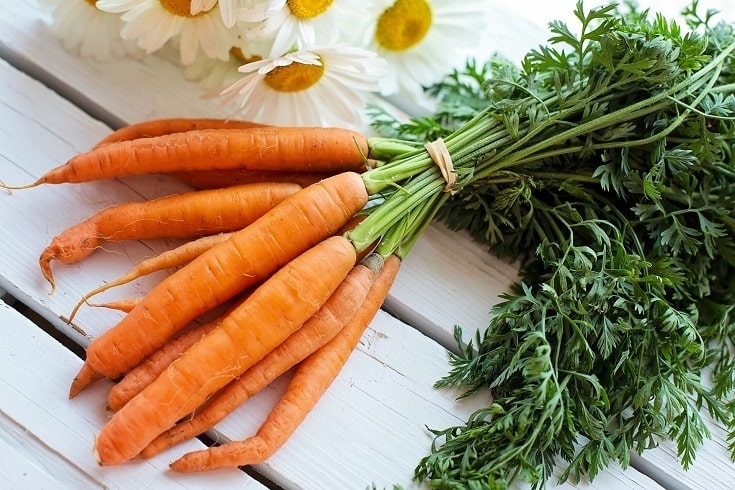
Carrots are another safe veg that cats may eat on occasion in small amounts. Despite it being nutrient rich for humans, felines are unlikely to reap any significant benefits from having a small piece of a carrot now and then. However, be particularly careful as this veg is hard and may pose a choking risk.
Cook the carrot to make it softer and easier for your cat to chew or mash it up, but offer a small amount now and then rather than a daily snack.

Final Words
Cats should not rely on fruits and vegetables to satisfy any of their nutritional needs because they are obligate carnivores. However, many fruits and veggies, like the ones outlined here, are safe to be offered in moderation and occasionally, as long as your cat doesn’t suffer from any health issues or according to your vet’s advice.
Related Reads:
Featured Image Credit: Guajillo studio, Shutterstock
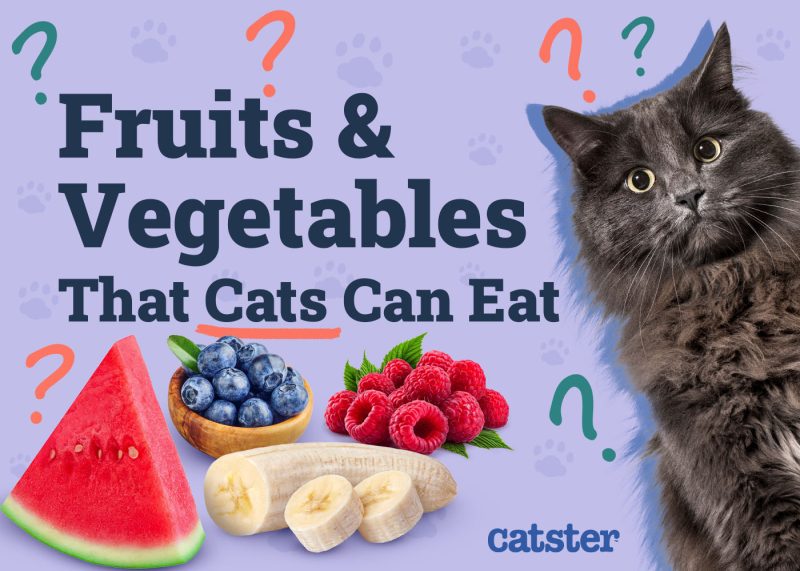


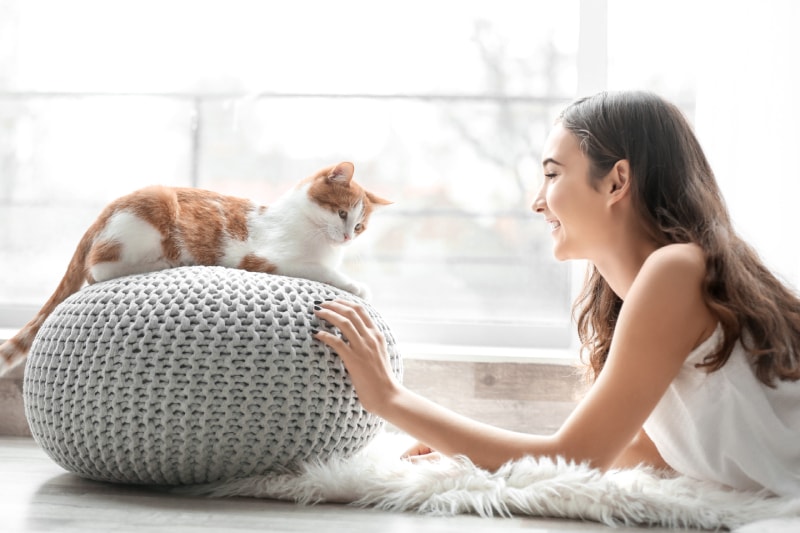
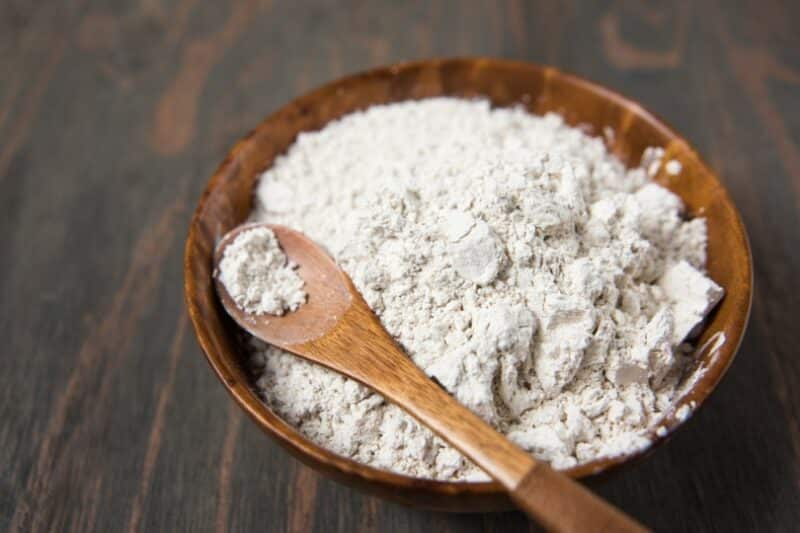

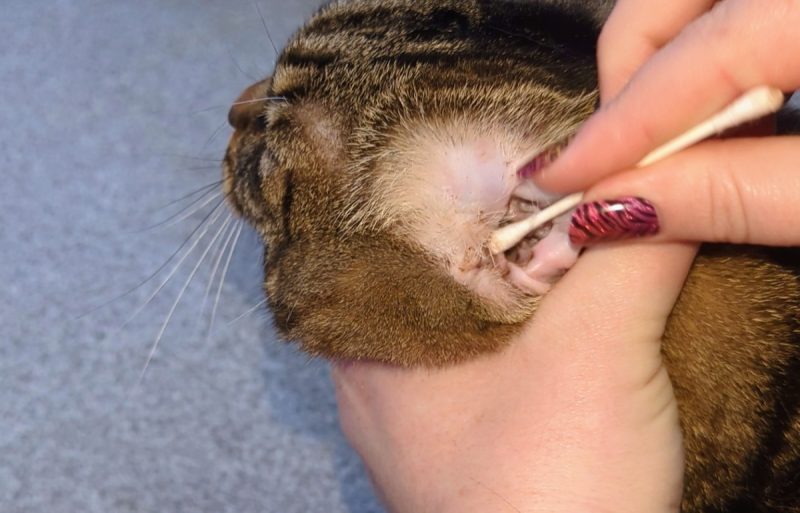
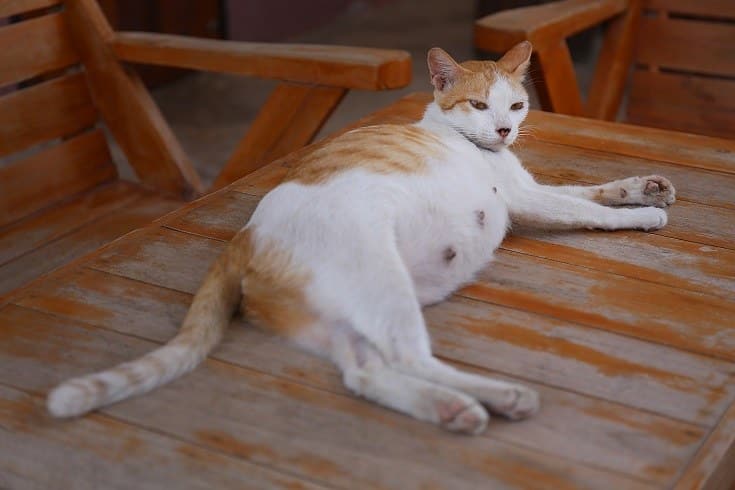
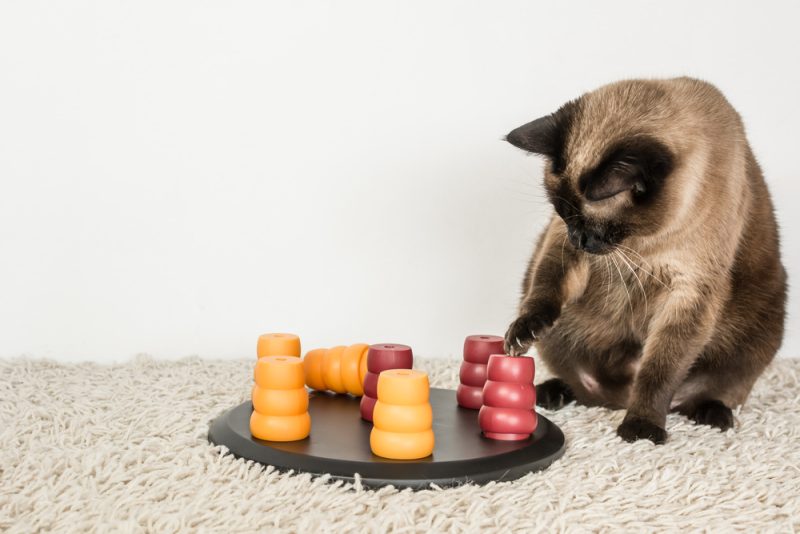
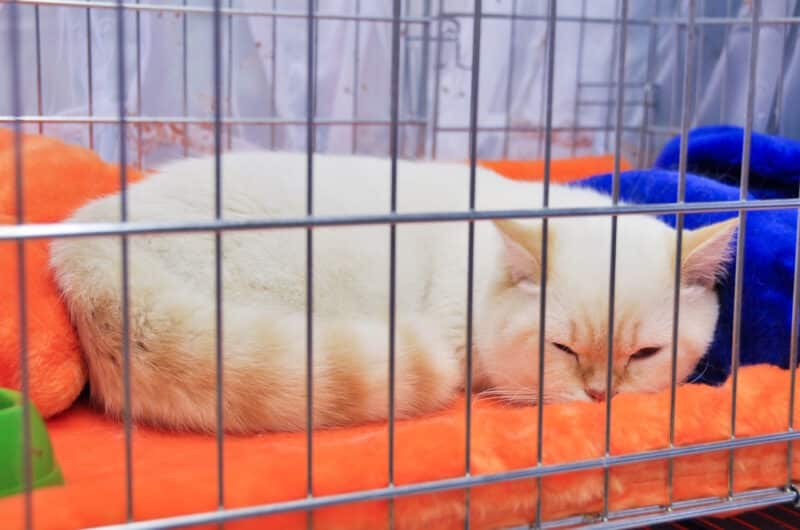
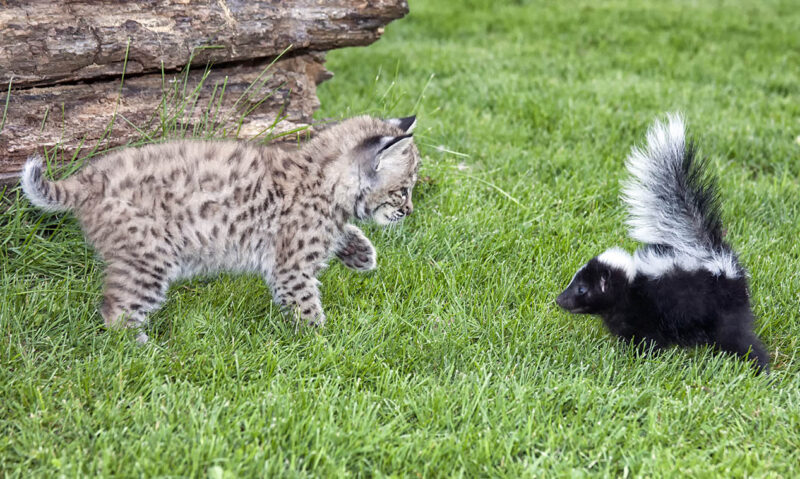
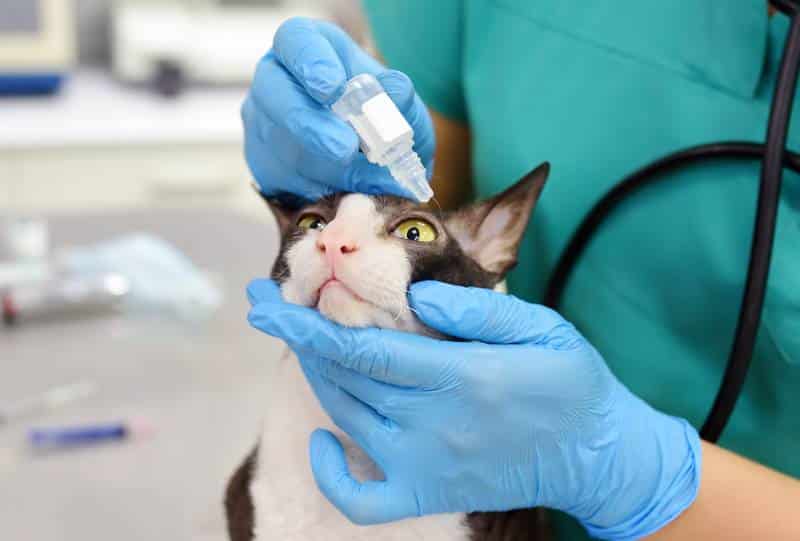
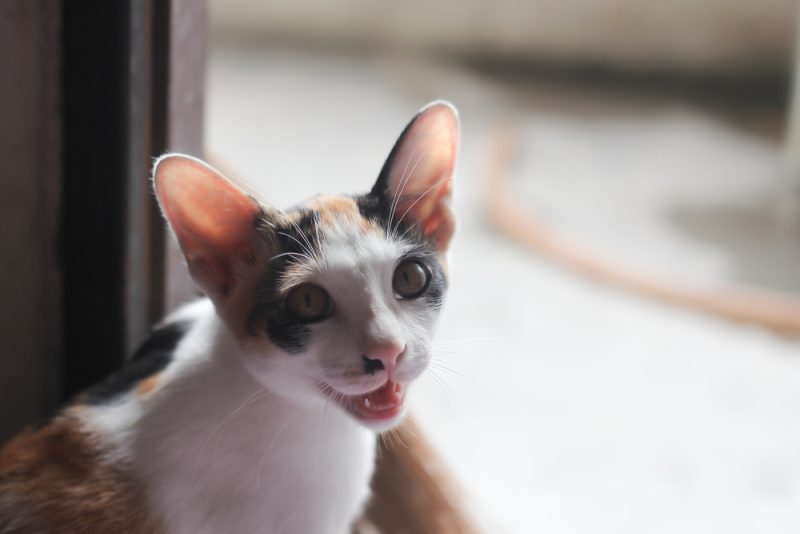
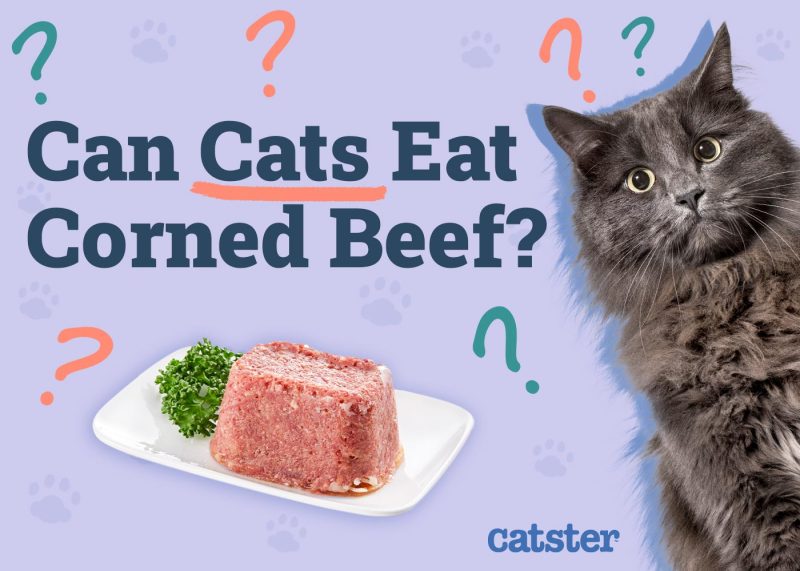
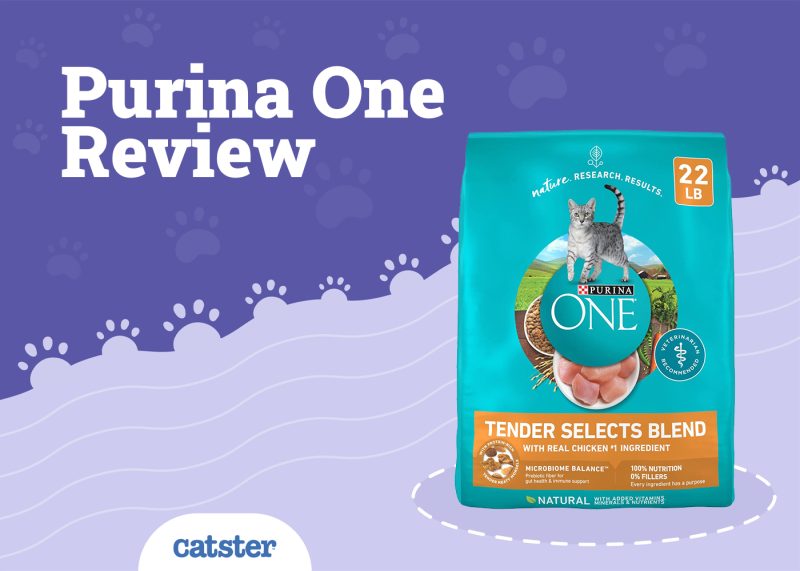
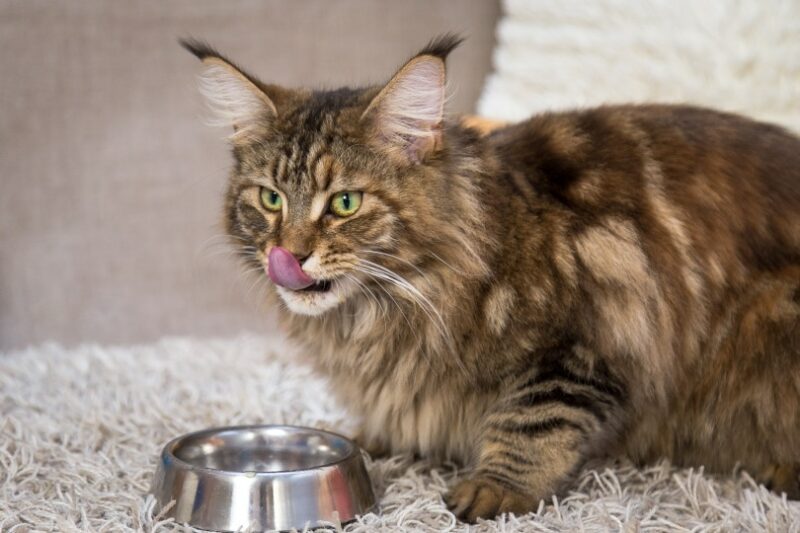
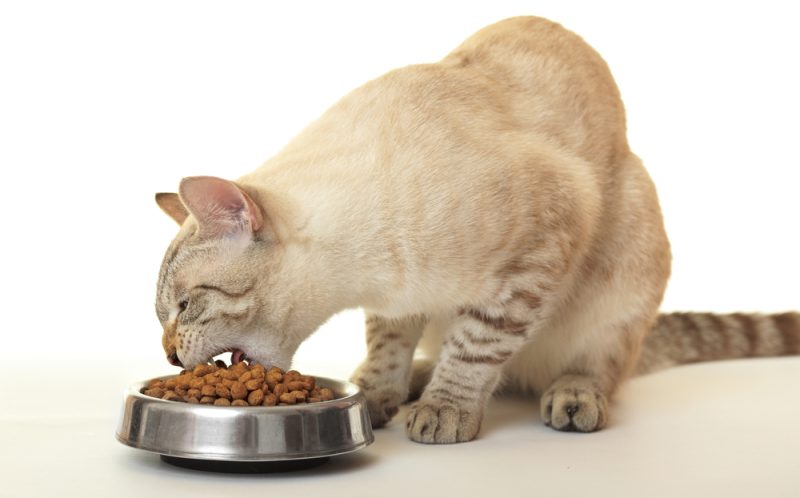
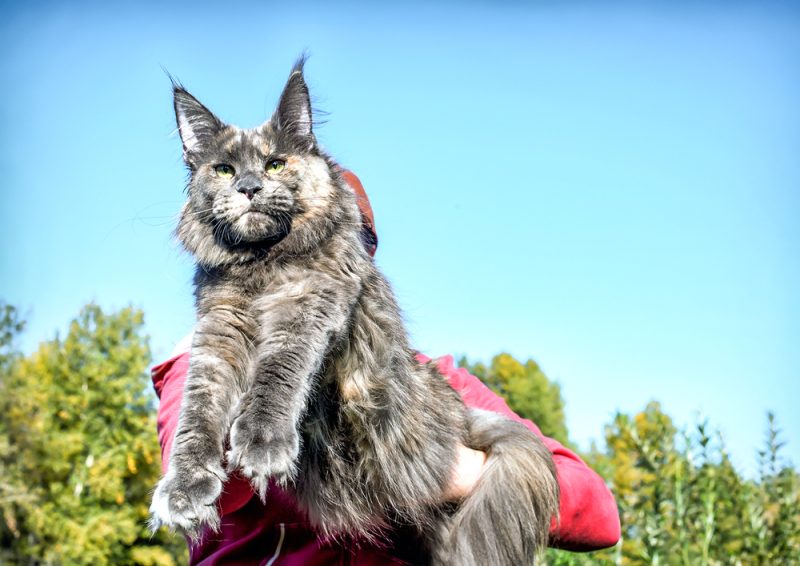
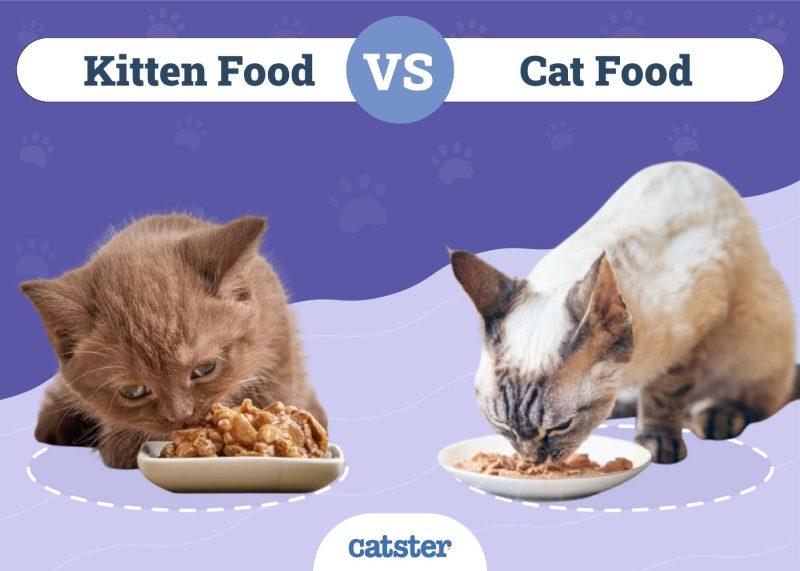

3 Responses
I have a very sick cat. she has diabetes and takes insulalin. She also has come down with a kidney infection, she is now on a very strong antibiotic. She seems to be having a hard time eating solid food. I have gien her some of the fancy feast broths that she loves and laps up, but they are expensive . I would like to make her some chicken soup, but I.m not sure about a few things. Like do you put salt in it, and what to use to amke it tasty for her. Can you give me some tips? I would appreciate whatever you can add.
Thank you,LF
Hi Linda, we are very sorry to hear about your cat. With cats who are suffering from medical conditions, it is not recommended to feed them anything without your veterinarian's approval. That said we can suggest you check this Homemade Soup For Cats Recipes at https://www.hepper.com/homemade-soup-for-cats and have them approved or not by your veterinarian. We hope your cat gets better soon.
See, take some chicken and boil it. Don't throw away the water as you can feed it to your cat as soup. Along with chicken boil some potato and carrot (same vessel). The broth can be used as soup and then the solid stuff can be grinded and fed. It's nutritious and your cat might love it. My persian cat eat this and like it.